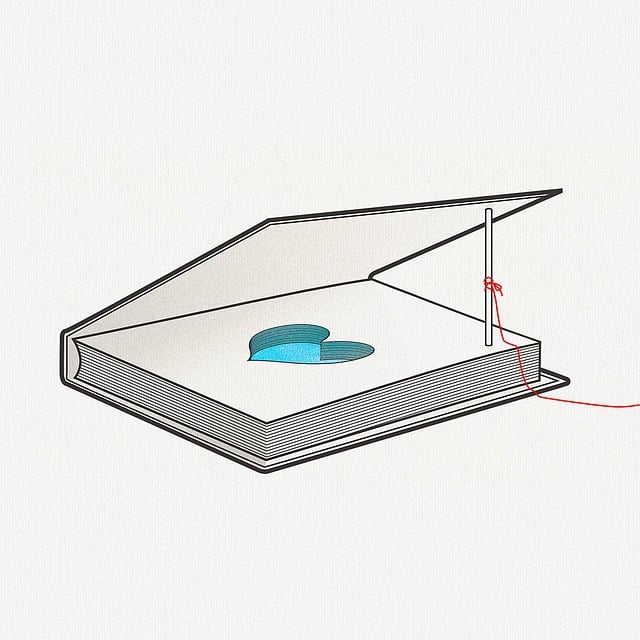Discover the ultimate guide on removing composite veneers, demystifying the process with expert advice and tips. Dive in for a seamless dental care experience!
1. Understanding Composite Veneers: An Introduction to Dental Care
Composite veneers are a popular choice in the world of dental care, offering a simple yet effective solution for enhancing the appearance of teeth. Made with a durable composite resin material, these veneers are designed to mimic the natural color and shape of teeth, creating a more aesthetically pleasing smile.
One of the key benefits of composite veneers is their versatility. They can be used to correct a wide range of cosmetic issues, including chipped, cracked, or stained teeth. Additionally, composite veneers are a minimally invasive treatment option, as they require little to no enamel removal, preserving the natural structure of the teeth.
- Composite veneers are custom-made to suit each individual’s unique dental needs.
- They are a cost-effective alternative to porcelain veneers.
- The application process is relatively quick and painless, with most cases requiring only a single dental visit.
- While composite veneers are not as stain-resistant or long-lasting as porcelain veneers, they can be repaired or replaced easily if any damage occurs.
If you’re considering composite veneers, it’s important to consult with a qualified dentist who can assess your oral health and determine if you’re a suitable candidate. With proper care and maintenance, composite veneers can provide you with a beautiful smile that boosts your confidence and self-esteem.
2. Signs that it’s Time to Remove Your Composite Veneers
Composite veneers are a popular option for achieving a bright, flawless smile. However, there may come a time when it is necessary to remove them. Here are some signs that indicate it’s time to remove your composite veneers:
1. Discoloration: Over time, composite veneers may become discolored and lose their natural shine. If your veneers have started to look yellow, brown, or stained, it may be a sign that they need to be replaced. Discoloration can occur due to various factors, such as consuming staining substances like coffee, tea, tobacco, or poor oral hygiene habits. However, professional cleaning may restore the original appearance in some cases.
2. Chipping or cracking: Composite veneers can withstand normal wear and tear, but they are not completely indestructible. If you notice any chips or cracks on your veneers, it’s essential to have them removed. Chipped or cracked veneers not only affect the aesthetic appeal of your smile but also make the tooth vulnerable to decay or further damage. Your dentist can determine whether repairing or replacing the veneers is the best course of action.
3. Preparing for Removal: Steps to Follow for Successful Veneer Removal
When it comes to removing veneers, following the proper steps is crucial to ensure a successful and smooth process. Here are the key steps you should follow:
- Schedule a consultation: Before starting the removal process, it is important to consult with your dentist or dental professional. They will assess the condition of your veneers and plan the removal accordingly.
- Gather necessary tools: To facilitate the removal, your dentist will prepare the required tools and equipment. This may include an anesthesia, pliers, adhesive remover, and a dental drill, among others.
- Anesthesia: To minimize discomfort during veneer removal, your dentist may use a local anesthesia to numb the area around the veneers.
- Removing the veneers: Using specialized pliers, your dentist will carefully detach the veneers from your teeth. They will utilize gentle and controlled movements to avoid any damage or fractures.
After the veneers are removed, your dentist will thoroughly clean and polish your teeth to remove any remaining adhesive or residue. Following these steps, you can expect a successful veneer removal process, allowing you to proceed with any further dental work or explore alternative cosmetic dentistry options to enhance your smile.
4. Dental Professionals’ Insights: How Composite Veneers are Removed
Composite veneers have become a popular choice among individuals seeking to enhance their smile. If you are considering getting composite veneers, it’s important to understand how the removal process works. Here are some insights from dental professionals:
1. Gentle removal technique: Dentists employ a gentle and meticulous approach when removing composite veneers. The procedure usually involves using a dental handpiece with a specially designed bur that carefully lifts off the veneer. This process ensures minimal damage to the underlying tooth structure and reduces the risk of discomfort during the removal.
2. Local anesthesia for added comfort: To ensure a pain-free experience, dental professionals often administer local anesthesia before starting the removal process. This numbs the area, allowing you to remain comfortable throughout the treatment. Your dentist will ensure the anesthesia is administered safely and at an appropriate dosage to guarantee optimal comfort.
3. The importance of professional expertise: Removing composite veneers should always be performed by a qualified dental professional. They possess the necessary skills and knowledge to ensure a smooth and successful removal. Attempting to remove veneers yourself or seeking unprofessional assistance can lead to tooth damage and complications.
4. After removal care: After your composite veneers are successfully removed, your dentist may recommend various post-treatment care measures. These may include gentle tooth polishing, thorough cleaning, and the application of fluoride to promote enamel strength. Following your dentist’s instructions post-removal will help maintain the health and integrity of your natural teeth.
5. Minimizing Discomfort: Techniques for a Comfortable Veneer Removal
When it comes to removing veneers, it is important to minimize any discomfort that may arise during the process. By implementing certain techniques, you can ensure a more comfortable experience for both the patient and the dentist. Here are some valuable tips and methods for achieving a pain-free veneer removal:
- Effective local anesthesia: Before starting the removal procedure, administering a local anesthetic can greatly reduce discomfort. Ensure that the anesthetic is properly applied and has taken effect before proceeding.
- Proper isolation and protection: Protecting adjacent teeth and soft tissues is crucial during the veneer removal process. The use of a rubber dam or dental dam can provide a barrier and minimize the chances of damaging neighboring teeth or irritating the gums.
- Precision dental tools: Using high-quality, sharp instruments is vital for a smooth veneer removal. Ensure that the dental tools are in good condition and properly sterilized for optimal efficiency and patient comfort.
Other techniques for a comfortable veneer removal procedure:
- Slow and gentle approach: Take your time during the removal process to avoid unnecessary pressure or stress. Slowly and gently loosening the veneer can prevent discomfort or potential damage.
- Communicate with the patient: Maintaining open lines of communication with the patient allows them to express any discomfort they may be experiencing. This allows adjustments to be made during the procedure to ensure a more comfortable experience.
- Post-removal care: Provide clear instructions to the patient on how to manage any discomfort or sensitivity that may occur after the veneer removal. Recommending over-the-counter pain relief options or topical gels can aid in minimizing any discomfort.
By employing these techniques and following best practices, both the dental professional and the patient can ensure a comfortable and pain-free veneer removal procedure.
6. Exploring Veneer Removal Options: Pros and Cons of Different Methods
When exploring veneer removal options, it’s important to consider the different methods available, each with their own advantages and disadvantages. Here, we’ll outline the pros and cons of a few popular veneer removal techniques:
1. Sanding:
Pros:
– Relatively inexpensive method that can be done at home with the proper tools.
– Allows for precise control over the veneer removal process.
– Can be used to remove veneers from both small and large surfaces.
Cons:
– May be time-consuming, especially for larger areas.
– Requires caution to avoid damaging the underlying material.
– Dust generated during sanding can be messy and may require additional cleanup.
2. Heat and Moisture:
Pros:
– Heat and moisture can help soften the adhesive, making it easier to remove the veneer.
– Can be effective for removing veneers without causing damage to the substrate.
– Allows for a non-intrusive removal method.
Cons:
– Requires careful application to prevent damage to the underlying surface.
– May take longer compared to other methods.
– Heat and moisture can be cumbersome to work with, requiring proper safety precautions.
3. Chemical Solvents:
Pros:
– Can provide a quicker and easier solution for removing veneers.
– Suitable for delicate surfaces as it doesn’t involve physical force.
– Can be effective for removing stubborn adhesives.
Cons:
– Chemical solvents may emit strong odors and require proper ventilation.
– Safety precautions, such as wearing gloves and eye protection, are necessary.
– Cost of solvents and potential harm to the environment should be considered.
Remember, each method has its own unique set of benefits and drawbacks. The choice of which veneer removal option to use will depend on factors such as the type of veneer, the underlying surface, and personal preferences. It’s always recommended to proceed with caution and consult a professional if you’re unsure about the best approach for your specific situation.
7. Aftercare Essentials: Caring for Your Teeth Post-Composite Veneer Removal
Proper aftercare is essential to maintain the health and appearance of your teeth after composite veneer removal. Following these guidelines will ensure that your teeth stay strong and healthy.
1. Maintain a good oral hygiene routine:
- Brush your teeth at least twice a day using a soft-bristled toothbrush and fluoride toothpaste.
- Floss daily to remove plaque and food particles from between your teeth.
- Rinse your mouth with an antibacterial mouthwash to help kill bacteria and freshen your breath.
2. Be mindful of what you eat and drink:
- Limit your consumption of foods and drinks that can stain your teeth, such as coffee, tea, red wine, and dark-colored berries.
- Avoid biting into hard or sticky foods that can damage your teeth or veneers.
- Drink plenty of water throughout the day to keep your mouth hydrated and to neutralize acid in your mouth.
8. Ensuring Optimal Results: The Importance of Regular Dental Check-ups
Regular dental check-ups are essential for maintaining optimal oral health. By scheduling regular visits with your dentist, you can prevent potential dental problems before they become more serious and costly to treat. During these check-ups, your dentist will thoroughly examine your teeth, gums, and mouth to detect any early signs of cavities, gum disease, or oral cancer.
In addition to a comprehensive examination, regular dental check-ups also involve professional teeth cleaning. Your dentist will use special tools to remove plaque and tartar buildup from your teeth, which cannot be completely eliminated through regular brushing and flossing alone. This not only helps prevent cavities and gum disease but also keeps your breath fresh and your teeth looking bright and beautiful. Moreover, during these visits, your dentist will offer valuable advice and guidance on proper oral hygiene practices, including brushing techniques, flossing, and the use of mouthwash. By following these recommendations, you can maintain a healthy smile and prevent future dental problems.
When it comes to your oral health, prevention is always better than treatment. By making regular dental check-ups a priority, you can ensure optimal results and long-term oral health. So, don’t wait until you experience discomfort or pain – make an appointment with your dentist today and keep your smile shining bright for years to come.
9. Addressing Common Concerns: FAQs about Composite Veneer Removal
Whether you are considering having your composite veneers removed or you have already made the decision, it’s natural to have some questions and concerns. In this section, we will address some of the most frequently asked questions about composite veneer removal to help alleviate any worries you may have.
Can I remove composite veneers on my own?
It is highly recommended that you seek professional assistance when it comes to removing composite veneers. While it may be tempting to try a DIY removal, doing so can lead to damage to your natural teeth or underlying structures. Dentists possess the necessary tools and expertise to safely remove composite veneers without causing harm. By seeking professional help, you can ensure the best possible outcome and minimize the potential risks.
Does removing composite veneers hurt?
The process of removing composite veneers is typically painless and minimally invasive. Your dentist will apply a local anesthetic to numb the area, ensuring that you experience little to no discomfort during the procedure. However, it’s important to remember that everyone’s pain tolerance is different, and some individuals may experience slight sensitivity or pressure during the removal process. Rest assured that your dentist will make every effort to ensure your comfort throughout the procedure.
10. Alternatives to Composite Veneers: Exploring Other Dental Restorative Options
Composite veneers are a popular choice for dental restoration, but they may not be suitable for everyone. If you’re looking for alternatives, there are several other options available to achieve optimal dental aesthetics. Here are a few alternatives worth exploring:
1. Porcelain veneers: Made from high-quality ceramic material, porcelain veneers are known for their durability and stain resistance. They are custom-made to match the color, shape, and size of your natural teeth, providing a seamless and natural-looking smile.
2. Dental crowns: Crowns are best suited for cases where a tooth is severely damaged or decayed. Unlike veneers that cover only the front surface of the tooth, crowns encase the entire tooth, providing added strength and protection. They are often used to restore teeth with large fillings, fractures, or after a root canal treatment.
3. Dental bonding: This technique involves applying a tooth-colored composite resin to the tooth’s surface and sculpting it to the desired shape. Bonding is an affordable option for fixing minor chips, cracks, or gaps in the teeth, while also improving their appearance. This procedure can be completed in a single visit to your dentist’s office, making it convenient for busy individuals.
4. Teeth whitening: Sometimes, all you may need to enhance your smile is a teeth whitening treatment. Professional teeth whitening procedures can effectively remove stains and discoloration, rejuvenating the appearance of your teeth. From in-office treatments to at-home whitening kits, there are several options available to suit your needs.
Remember, it’s essential to consult with a dentist to determine which alternative option is most suitable for your specific dental needs and goals. Embrace the possibilities and achieve the smile you’ve always wanted. In conclusion, removing composite veneers requires professional expertise. Dentists use safe procedures to protect the natural tooth structure during the removal process. Remember, seeking professional help is crucial to maintain healthy and beautiful smiles. Take care of your dental health and consult a dentist for proper guidance and treatment.





